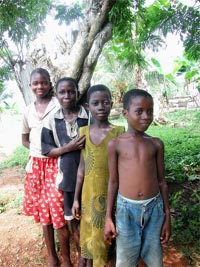How a Native Elder & a Muslim Found Spiritual Friendship at a Christian Celebration
The invitation came from the Centre for Christian Studies to be a presenter at their 130th Anniversary celebrations in Winnipeg. The evening’s theme was Diversity, Transformation, and Hope. I was to substitute for Joy Kogawa, a fine poet who could not make it. How could I fill her shoes!? When I heard the theme, though, I said yes.
Creating 20,000 Interfaith Dialogues
Getting to know you… a lot better
A Conversation with John Cobb
TIO: Thank you for taking the time to speak with me, Professor Cobb. I’m particularly interested in talking about one of your recent books.
John Cobb:Which one?
TIO: The Dialogue Comes of Age: Christian Encounters with Other Traditions.
Cobb: I thought you might be referring to it.
TIO: One of the things that struck me was how it focused on dialogue between religious communities as a collective. Could you tell me more about that?
The Lost Art of Listening

The North American Interfaith Network (NAIN) gathering in Phoenix, Arizona, last July included a visit to a Hindu temple where a meal was shared along with questions, stories, and new friendships, all depending on everyone listening very carefully to each other.
Respectful communication is at the heart of all interfaith gatherings. We know that it is one of the most important components for building relationships of peace and harmony across faith traditions and belief systems. The focus of this essay is on the importance of the art of listening in interfaith dialogue and practices that support us in becoming more effective listeners.
If we think of speaking and listening as two of the major elements of communication, most often speaking is thought of as the more powerful role; it certainly gets the most attention. My experience is that the role of listening is even more powerful, although one seldom recognized or understood. For example, we often hear someone comment “That was a really powerful speech.” I’ve never heard anyone say: “That was a really powerful way to listen.”
Rights, Responsibilities, and Skills of Dialogue
A Safe Place to Address Prejudice, Stereotypes, and Fears
Several years ago I joined a small group of concerned people responding to a growing interest in appreciating and respecting the faith traditions of humankind. We developed home-based educational programs for small groups of interested people who know little if anything about religions other than their own. It began informally, spread by word of mouth, and now hundreds of workshops have been held.
The Language of Interfaith Conversation
Guidelines for Engaging in Productive Interfaith Dialogue
A ‘Dialogue of Life’ Approach to Interfaith Peace in West Africa

Children in Ghana are being raised in a ‘dialogue of life’ that makes religious differences a source of friendship, not conflict. [Source]
A religious revolution has emerged in many local African communities and nations as a whole in the last one hundred years or so. Within the period, various religions have come to live in closer proximity with one another than they had during the previous century. African towns and cities now collaborate with churches and mosques and to a lesser extent traditional/primal religious activities.
Subsequently, at the present time, people of different faiths encounter one another more often in both structured and unstructured ways. For example, in many homes across Ghana and the Gambia, it is common to find followers of African indigenous religions, Christianity, and Islam – with all the different groups of Christianity and Islam living together. By extension such relations are carried to the larger village or town community.





